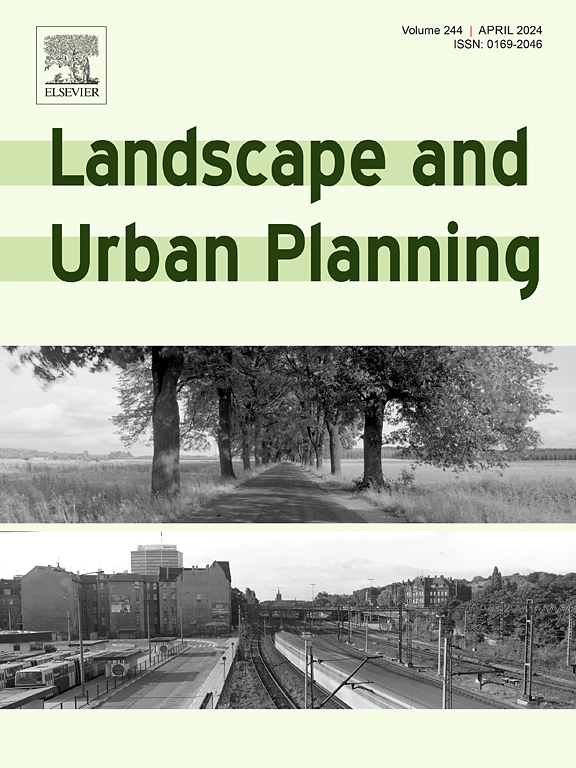特征网络:环境特征是自然连接体验的核心
IF 7.9
1区 环境科学与生态学
Q1 ECOLOGY
引用次数: 0
摘要
景观规划和设计有可能有助于修复我们与自然日益增长的心理脱节。然而,要做到这一点,重要的是要知道什么样的环境特征会影响我们与自然的联系,某些环境会让我们感觉。本研究使用网络分析的新应用来确定哪些环境特征对自然连接体验最重要。在这项研究中,205名参与者完成了在线调查,在调查中,他们报告了在之前的四次自然连接体验中各种环境特征的存在或缺失。他们还指出了他们对每次经历回忆的自然联系程度。网络分析显示,最积极重要的特征是那些在农村自然中常见的特征(例如,野生自然、动物和山脉或丘陵)。反映人类存在的特征(如建筑物、铺砌的道路、车辆)是最负重要的。在半乡村自然中常见的特征(例如,树木和草地)似乎只有在与野生特征联系在一起时才显得重要。此外,步道、野生自然和山脉或丘陵是自然连接体验最核心的三个特征,这表明它们对于如何支持网络的其他部分尤为重要。总的来说,从纯粹的自然联系的角度来看,这些发现支持了加大野生化努力的必要性——不仅仅是简单地增加进入城市自然的基本途径——同时也限制了人类发展的明显存在。还讨论了其他更细微的发现。本文章由计算机程序翻译,如有差异,请以英文原文为准。
Feature networks: The environmental features that are central to nature- connectedness experiences
Landscape planning and design holds the potential to contribute to efforts toward repairing our growing psychological disconnection with nature. To do so, however, it is important to know what types of environmental features impact how connected to nature certain environments make us feel. The present study used a novel application of network analysis to identify which environmental features are most important for nature connection experiences. In this research, 205 participants completed online surveys in which they reported the presence or absence of a variety of environmental features during four previous nature connection experiences. They also indicated their level of recalled nature connectedness for each experience. The network analysis revealed that the most positively important features were those commonly found in rural nature (e.g., wild nature, animals, and mountains or hills). Features reflecting human presence (e.g., buildings, paved roads, vehicles) were most negatively important. Features commonly found in semi-rural nature (e.g., trees and meadows) were seemingly only important insofar as they were associated with the wilder features. Additionally, trails, wild nature, and mountains or hills were three of the features most central to nature connection experiences, suggesting that they are particularly important for how they support other parts of the network. Overall, from a purely nature-connection perspective, these findings support the need for increased rewilding efforts—more than simply increasing basic access to urban nature—and also limiting the overt presence of human development. Other more nuanced findings are also discussed.
求助全文
通过发布文献求助,成功后即可免费获取论文全文。
去求助
来源期刊

Landscape and Urban Planning
环境科学-生态学
CiteScore
15.20
自引率
6.60%
发文量
232
审稿时长
6 months
期刊介绍:
Landscape and Urban Planning is an international journal that aims to enhance our understanding of landscapes and promote sustainable solutions for landscape change. The journal focuses on landscapes as complex social-ecological systems that encompass various spatial and temporal dimensions. These landscapes possess aesthetic, natural, and cultural qualities that are valued by individuals in different ways, leading to actions that alter the landscape. With increasing urbanization and the need for ecological and cultural sensitivity at various scales, a multidisciplinary approach is necessary to comprehend and align social and ecological values for landscape sustainability. The journal believes that combining landscape science with planning and design can yield positive outcomes for both people and nature.
 求助内容:
求助内容: 应助结果提醒方式:
应助结果提醒方式:


